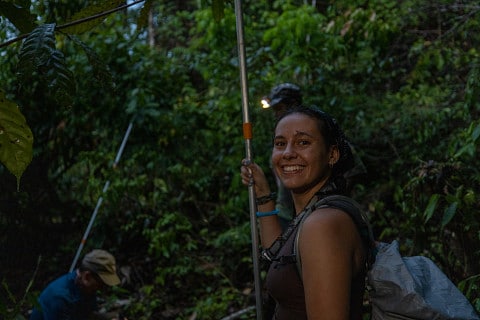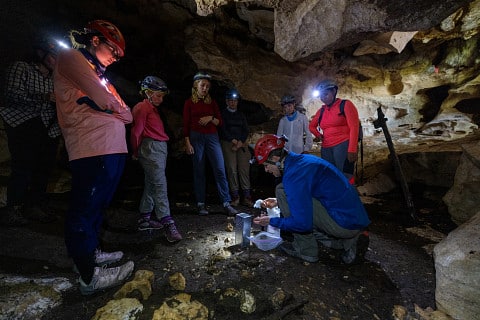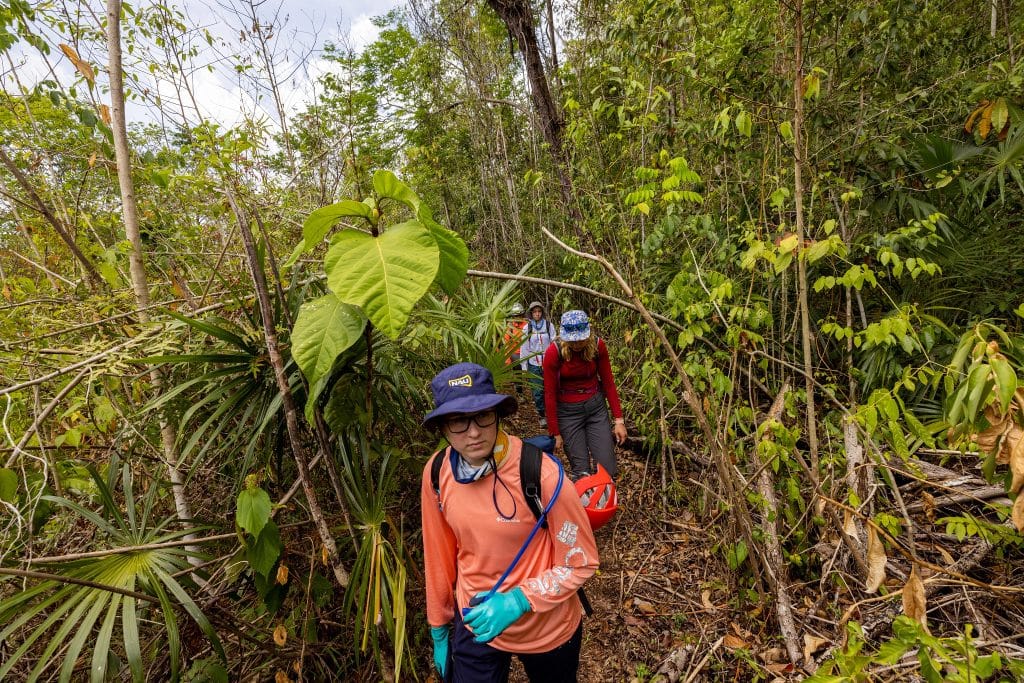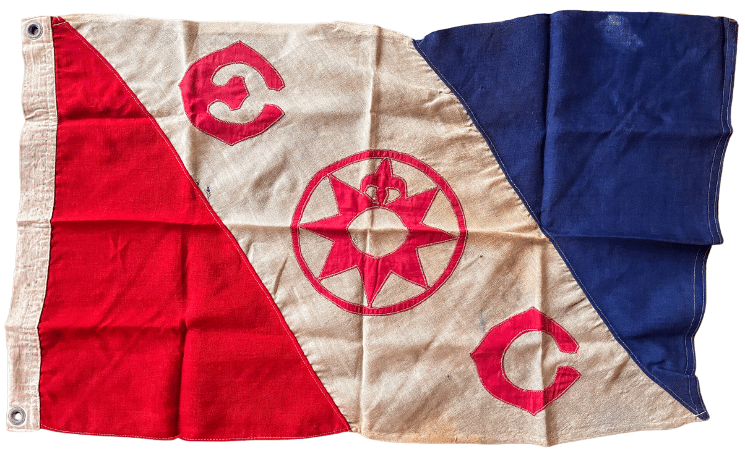Q: What’s red, white and blue and has gone to the moon, the North and South poles, the top of Mount Everest, the bottom of the Mariana Trench and NAU’s Jungle Boot Camp in Belize?
A: This flag:
It’s the flag of the Explorers Club, an international organization that encourages pioneering exploration and scientific endeavor into the as-yet-unknown parts of the world—and beyond. Only a few explorers get approval to take a flag with them on their expeditions. This summer, one of those flags accompanied Jut Wynne, an assistant research professor in the Department of Biological Sciences, and his students to the Belize Tropical Ecology Field School.
It’s a big deal.

Wynne, who is a fellow of the Explorers Club, takes students to study the ecology of the rain forests of Belize every summer. Colloquially known as Jungle Boot Camp, students receive on-the-job training and dive into field research. Their research involves studying the ecosystems of caves and research objectives include mist-netting bats, capturing small mammals, documenting animal activity, collecting cave-dwelling arthropods and collecting bat call data and trail camera data of the diversity of wildlife species, including jaguars and pumas, that use the caves.
Read more from Wynne about the importance of caves in conservation.


Liliya Giroux, a senior environmental sciences major from Surprise, was one of the “aspiring scientists and adventurers” who signed up for Jungle Boot Camp. She spent her days trekking through the pine savannah or rainforest collecting data. The once-in-a-lifetime experience of working alongside conservationists, in reserves and animal sanctuaries gave her a greater understanding of the effects of deforestation on the animals in the Belizean rainforest.
“While this study abroad trip focused on learning several different ecological field techniques, we also got a great glimpse at local culture, food, music and Mayan history,” Giroux said. “I learned about the exciting ecology of a tropical environment, the current threats of habitat loss and the beautiful culture and history of Belize. It was truly unforgettable.”
Heidi Toth | NAU Communications
(928) 523-8737 | heidi.toth@nau.edu





